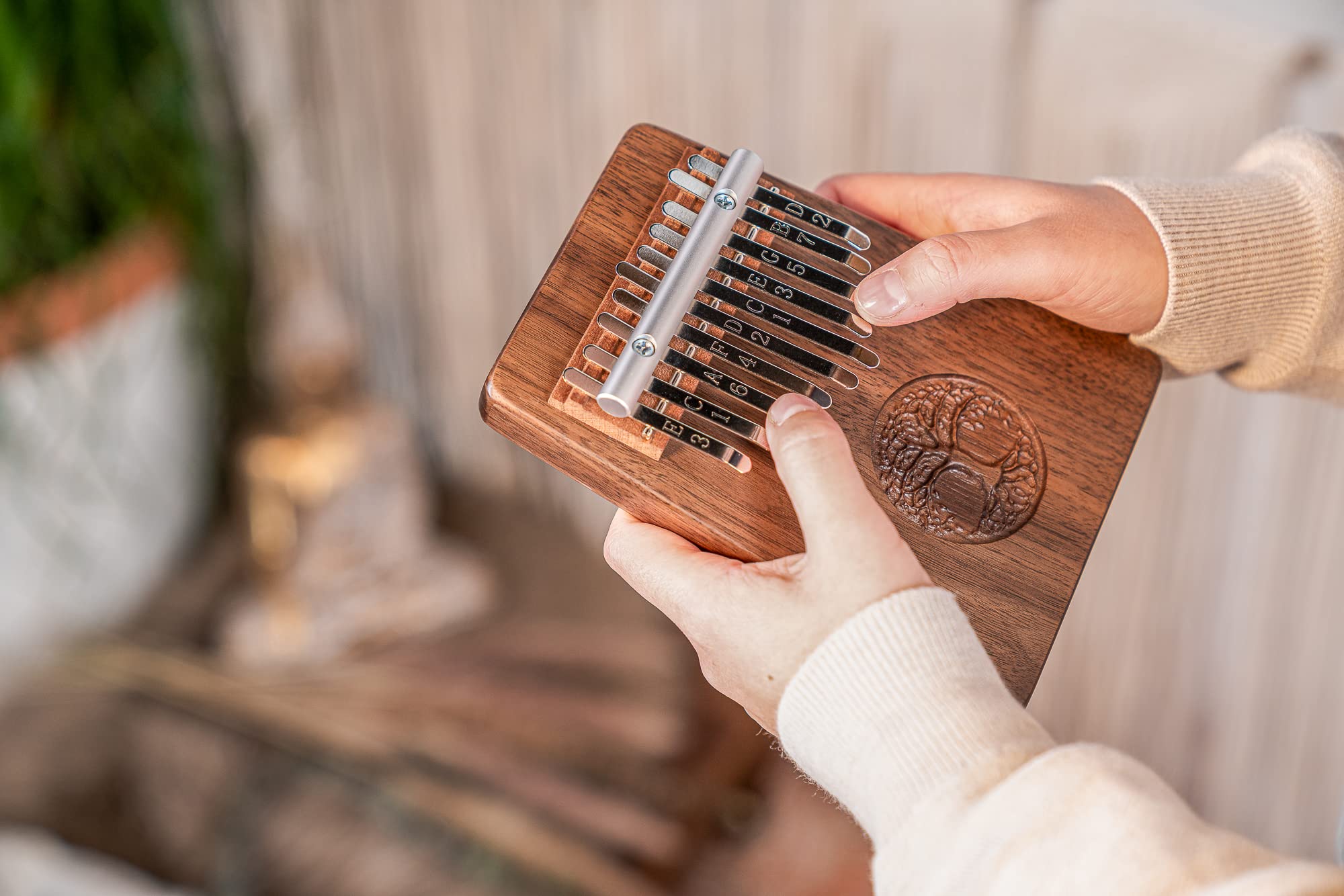Home>Instruments>Piano>How To Play Blues On Piano


Piano
How To Play Blues On Piano
Published: February 11, 2024
Learn how to play blues on piano with our step-by-step guide. Discover essential techniques and improve your piano skills today.
(Many of the links in this article redirect to a specific reviewed product. Your purchase of these products through affiliate links helps to generate commission for AudioLover.com, at no extra cost. Learn more)
Table of Contents
Introduction
Introduction
Playing blues on the piano is a soulful and expressive art form that has captivated music lovers for generations. The blues genre has a rich history rooted in African American culture, and its influence can be heard in various music styles, from jazz to rock and roll. Mastering the blues on the piano allows musicians to convey raw emotions and create a deep connection with their audience.
In this guide, we will explore the fundamentals of playing blues on the piano, from understanding the blues scale to incorporating bluesy riffs and licks. Whether you’re a beginner pianist or have some experience with the instrument, this article will provide valuable insights and techniques to help you infuse your piano playing with the essence of the blues.
Get ready to delve into the world of soul-stirring melodies, expressive phrasing, and rhythmic nuances as we uncover the art of playing blues on the piano.
Understanding the Blues Scale
Understanding the Blues Scale
The foundation of playing blues on the piano lies in understanding the blues scale. Unlike the traditional major and minor scales, the blues scale infuses a distinct and evocative tonality into the music. The blues scale consists of six notes, combining the minor pentatonic scale with an additional “blue note” for added expressiveness.
The blues scale is often characterized by its soulful and melancholic sound, evoking a range of emotions from longing to resilience. It serves as the cornerstone for creating that quintessential bluesy vibe in piano playing.
When playing in the key of C, the blues scale includes the following notes: C, Eb, F, Gb, G, and Bb. These notes come together to form the unmistakable sound of the blues, providing a solid framework for improvisation and melodic expression.
Understanding the nuances of the blues scale is essential for capturing the essence of blues music on the piano. By internalizing the unique intervals and phrasing inherent in the blues scale, pianists can infuse their playing with the characteristic soulfulness and depth that define the genre.
Whether you’re just beginning to explore the blues scale or seeking to deepen your understanding of its intricacies, mastering this foundational element is key to unlocking the emotive power of blues piano playing.
Basic Left Hand Patterns
Basic Left Hand Patterns
As you embark on your journey to master blues piano, familiarizing yourself with basic left-hand patterns is crucial. These patterns form the rhythmic and harmonic foundation upon which the blues melody unfolds, adding depth and groove to your playing.
One of the most common left-hand patterns in blues piano is the 12-bar blues progression. This foundational pattern provides a framework for countless blues compositions and improvisations. In the key of C, the 12-bar blues progression typically follows a chord structure that includes the C7, F7, and G7 chords, creating a sense of tension and release that is emblematic of the blues.
Additionally, mastering the walking bass line technique can greatly enhance the authenticity and dynamism of your blues piano playing. This technique involves playing a sequence of descending or ascending bass notes, often in a quarter-note or eighth-note rhythm, to create a driving and melodic underpinning for the music.
Furthermore, incorporating rhythmic variations and syncopated patterns into your left-hand playing can infuse your blues piano performance with a lively and infectious energy. Experimenting with different rhythmic accents and off-beat patterns adds a layer of complexity and excitement to your playing, captivating listeners and propelling the music forward.
By honing your proficiency in these basic left-hand patterns, you lay a solid groundwork for expressing the rhythmic pulse and harmonic richness inherent in blues music. These patterns not only provide structure and support for your right-hand improvisations but also contribute to the overall authenticity and allure of your blues piano repertoire.
Right Hand Techniques
Right Hand Techniques
While the left hand forms the harmonic and rhythmic backbone of blues piano playing, the right hand is responsible for delivering soulful melodies, expressive phrasing, and captivating improvisations. Mastering a range of right-hand techniques is essential for infusing your blues piano performance with depth and emotion.
One of the fundamental techniques for the right hand in blues piano is the use of blues scales and their variations. By familiarizing yourself with different positions and fingerings of the blues scale across the keyboard, you can effortlessly navigate the expressive nuances of the blues, weaving captivating melodies and emotive passages into your playing.
Bending notes is another hallmark technique that adds a vocal-like quality to blues piano performances. Mimicking the expressive bends and slides of a blues guitarist, pianists can evoke raw emotion and intensity by subtly manipulating the pitch of individual notes, infusing their playing with a deeply personal and evocative touch.
Exploring the use of trills, grace notes, and tremolo techniques can further enhance the expressiveness and virtuosity of your right-hand playing. These embellishments inject flair and spontaneity into your melodies, allowing you to imbue each note with character and resonance, captivating your audience with the rich tapestry of blues piano expression.
Additionally, mastering the art of dynamic control and phrasing is pivotal for conveying the ebb and flow of emotion in blues music. Learning to vary the intensity and articulation of your right-hand passages, from gentle whispers to impassioned wails, empowers you to paint a vivid and evocative sonic landscape, drawing listeners into the heart of the blues.
By honing these right-hand techniques, you unlock a world of expressive possibilities, enabling you to channel the soul-stirring essence of the blues through your piano playing, captivating audiences with your emotive storytelling and musical prowess.
Adding Bluesy Riffs and Licks
Adding Bluesy Riffs and Licks
Elevating your blues piano playing to a new level of expressiveness involves incorporating bluesy riffs and licks that infuse your performance with character and flair. These melodic embellishments serve as the soulful ornaments that adorn your playing, adding depth and personality to your musical narrative.
One of the quintessential elements of blues piano is the use of blues licks, which are short, melodic phrases that encapsulate the essence of the blues. These licks often draw from the blues scale and its expressive intervals, weaving a tapestry of emotive storytelling within the music. By integrating blues licks into your improvisations and compositions, you imbue your playing with the raw emotion and authenticity that define the blues genre.
Furthermore, incorporating bluesy riffs, which are longer and more elaborate melodic passages, allows you to showcase your virtuosity and creativity on the piano. These riffs can range from soulful and introspective to fiery and intense, providing a platform for you to express a wide spectrum of emotions through your playing.
Exploring techniques such as slides, bends, and vibrato within your riffs and licks can add a vocal-like quality to your piano performance, evoking the expressive nuances of blues singers and instrumentalists. These techniques enable you to emulate the soulful inflections and dynamic phrasing that are emblematic of the blues tradition, captivating listeners with your evocative and impassioned playing.
Moreover, integrating call-and-response patterns into your bluesy riffs and licks allows for engaging musical dialogues between your left and right hands, creating a sense of spontaneity and interplay within your performance. This dynamic exchange of melodic motifs adds an element of storytelling and conversation to your playing, captivating audiences and inviting them into the emotive world of the blues.
By embracing bluesy riffs and licks, you enrich your blues piano repertoire with an array of melodic expressions, infusing your playing with soulful storytelling and captivating your listeners with the timeless allure of the blues.
Putting It All Together: Playing a Blues Song
Putting It All Together: Playing a Blues Song
Now that you’ve delved into the essential elements of blues piano playing, it’s time to bring everything together and embark on the exhilarating journey of playing a blues song. As you merge the foundational techniques, scales, and improvisational approaches, you’ll discover the transformative power of creating soul-stirring blues music on the piano.
Begin by selecting a blues song that resonates with you, whether it’s a timeless classic or a contemporary blues composition. Familiarize yourself with the song’s structure, chord progressions, and melodic motifs, allowing you to internalize the essence of the piece and immerse yourself in its emotive landscape.
As you approach the song, integrate the foundational left-hand patterns, such as the 12-bar blues progression and walking bass lines, to establish a rhythmic and harmonic framework that underpins your performance. These patterns infuse the music with a sense of groove and momentum, laying the groundwork for your right hand to weave its melodic tapestry.
Utilize the blues scale and its variations to craft expressive and emotive melodies, allowing the soulful tonality of the blues to permeate your playing. Explore the nuances of bending notes, incorporating trills and grace notes, and mastering dynamic control to infuse your performance with the raw emotion and storytelling prowess that define the blues tradition.
Integrate bluesy riffs and licks into your improvisations, using these melodic embellishments to add character, depth, and virtuosity to your rendition of the blues song. Embrace the freedom of expression and spontaneity as you navigate the musical landscape, engaging in a captivating dialogue between your left and right hands, and infusing each passage with the soulful essence of the blues.
Throughout your blues piano journey, remember that the true heart of the blues lies in the emotive storytelling and the profound connection forged between the musician and the audience. As you bring all the elements together to play a blues song, immerse yourself in the rich tapestry of emotions and experiences that the blues encapsulates, allowing your performance to resonate with authenticity and passion.
Embrace the soul-stirring power of the blues, and revel in the transformative experience of playing a blues song that captivates hearts and transcends musical boundaries.











